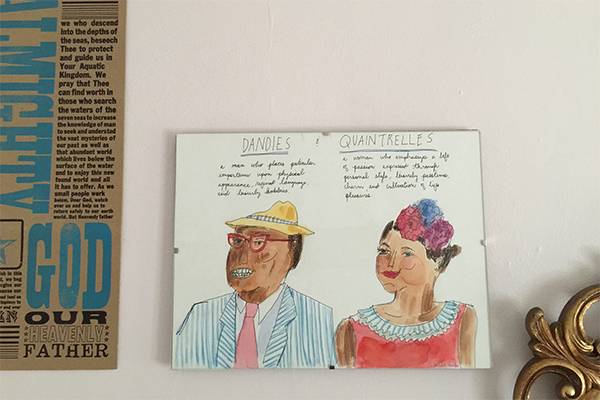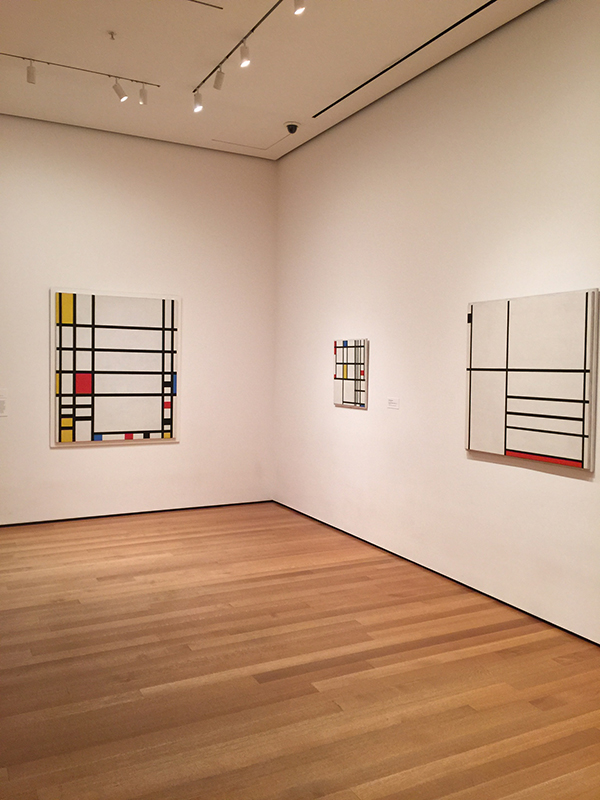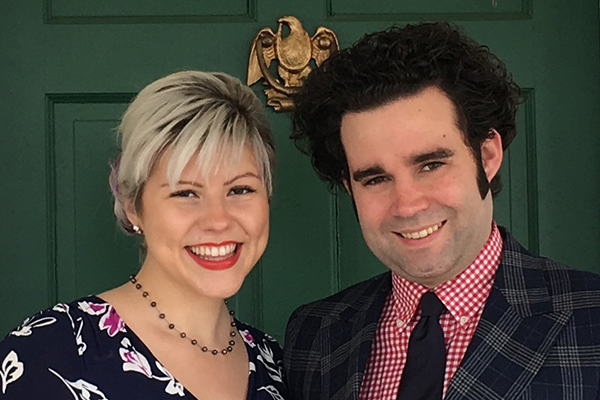This is it! Today in part 4 of How to Start Your Art Collection, I’m giving you a simple rundown of preserving and displaying your art. So Husband and I thought this would be the best time to give you the story behind the piece that we recently purchased.
As I mentioned yesterday, Husband actually spotted this piece on the Dr. Seuss site, and we immediately fell in love. It combines two of our loves: black & white and boobies. (#freethenipple) Not to mention the fact that we both share an affinity for whimsical art, and who is the master of whimsy if not the doctor himself?
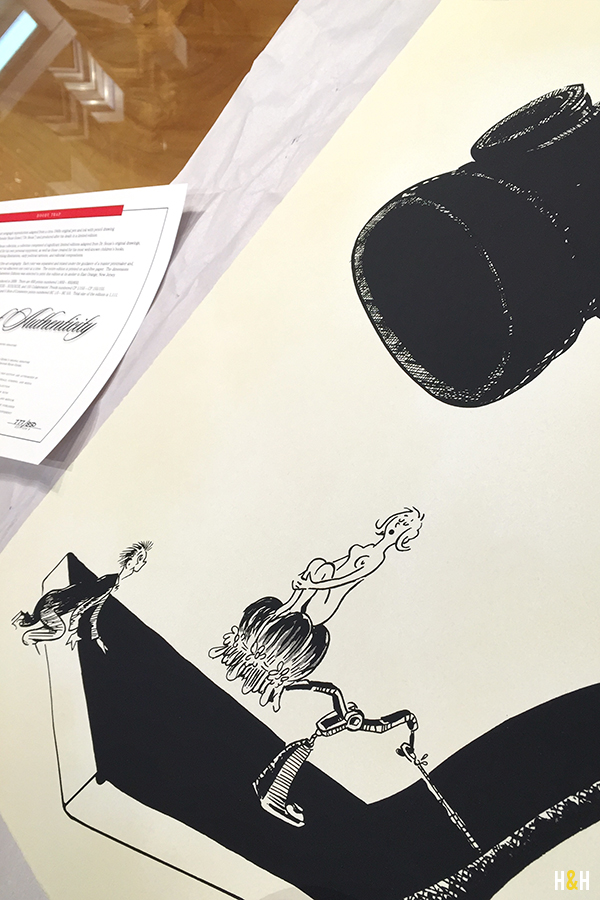
This is a detail of “Booby Trap” by Dr. Seuss that I shot when we pulled “Booby Trap” out of her shipping container for the first time. It was totally a “hold your breath and don’t sneeze” sort of moment.
The print is a limited-edition serigraph (or screen print) of a pen and ink drawing that Dr. Seuss did in the early 1940s on illustration board. During this time, Dr. Seuss helped create the “Private Snafu” series with Frank Capra’s (It’s a Wonderful Life) U.S. Army Signal Corps and Warner Brothers. The series was intended to school the younger soldiers entering the military late in the war and also boost morale. You’ll recognize the voice actor as Mel Blanc–a favorite voice actor of many, me included, who voiced numerous Looney Tunes characters including Bugs Bunny and was also a regular on the Jack Benny Show. You can watch the remastered short below.
So when you invest in a piece, regardless of what medium it is, you must find the best way to protect it. For this, call in a professional. Find a reputable framer in your town who’s been doing this for a while and knows their materials.
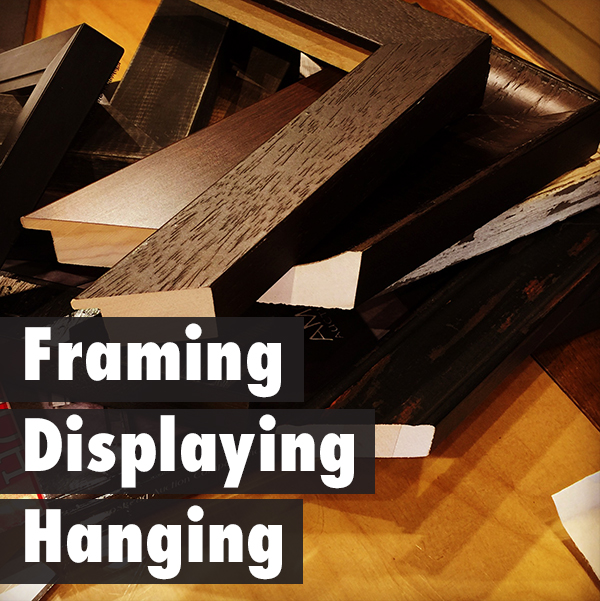
I’ve already mentioned acid-free paper and canvas, but at this stage there are other steps that you can take to be sure that your piece is cared for.
If you’ve invested money in art, I’d suggest going in and asking for the “archival” treatment.
This means a few things. First, the frame’s glass will be archival glass, which is sort of like sunglasses for your piece of art. It literally helps protect your painting from sun damage with a UV filter. Next, make sure that everything touching your art in the frame will be acid free. This includes the mat as well as any tape (they have a special kind that is easily removable) the framer may use to keep the piece in place.
After you’ve talked quality, it will be time to pick the mat and frame. If you don’t know your framer, it may be helpful to bring in a couple pictures of the room where you’re planning on displaying the piece. That way they can get an idea of your style as they walk you through choosing your mat and frame.
There are seemingly infinite choices so if you get overwhelmed: remember that you are talking to a professional, and let them do their job.
Finally, the detail that you may not be expecting is a certificate of authenticity. I thought this was particularly cool because it stated why the limited editions were made as well as the printmaker that did the run. Our framer put this is an envelope on the back of our frame so that we don’t lose it.
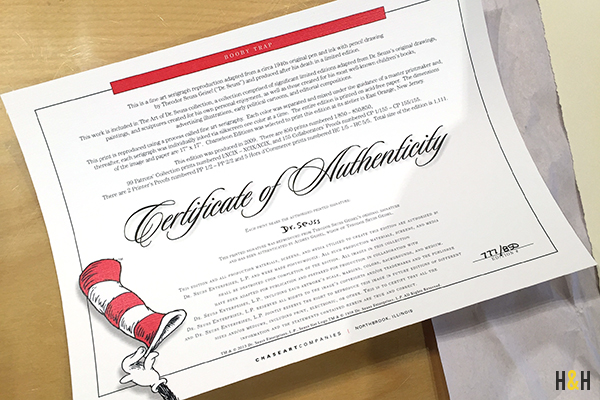
Finally, hang that sucker up in a place of prominence! Choose a spot that is out of direct sunlight to further insure that it doesn’t get sun-damage. Here is “Booby Trap” hanging in our living room. We smile every time we see that fateful pair perched on our black walls right next to an antique church sconce. Fits in perfectly, no?

Miss the rest of this series?
Read Part 1: How to Start Your Art Collection



